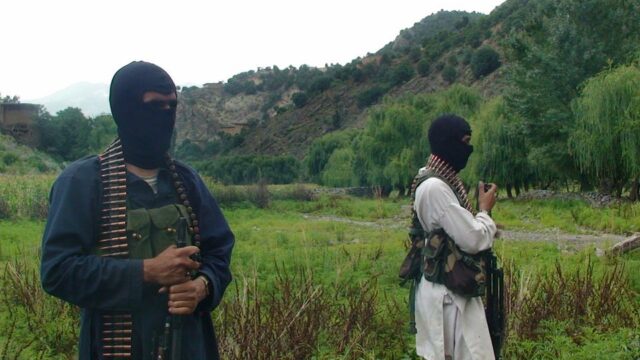
The Pakistani Taliban’s Re-Emergence in Swat: Reasons and Potential Responses
Publication: Terrorism Monitor Volume: 20 Issue: 21
By:

The Tehrik-i-Taliban Pakistan (TTP, or “Pakistani Taliban”) now has a confirmed presence not only in northwestern Pakistan’s Swat district, but also in Dir, Bajaur, and Buner districts. After a military operation in Swat in 2009, the TTP had been expelled from the area, but TTP have re-emerged. The TTP first became active in Swat in 2008 and demanded the implementation of sharia law in that area, but they were not violent initially. However, after gaining some strength, the TTP became violent and began beheading government security forces, elders and other civilians opposed to the group. Although Swat, which is known today as the Switzerland of Asia, also was the area where the Nobel Laureate Malala Yousafzai was shot by the TTP in 2012, the government writ strengthened in the district after a military operation in Swat in 2009. No major incidents occurred after the Malala assassination attempt, for example (India Today, August 12). Nonetheless, the recent re-emergence of TTP in Swat may bring another wave of renewed chaos and instability in Swat.
Causes of the TPP Re-emergence in Swat
Since the Taliban takeover of Afghanistan in August 2021, TTP attacks have accelerated in Pakistan (Terrorism Monitor, July 1). However, there are several reasons why the TTP has been emboldened to expand its presence into Swat specifically. Firstly, the U.S withdrawal from Afghanistan allowed the TTP to enjoy greater freedom in Afghanistan without any international forces to pressure the group. Moreover, not only has the TTP been strengthened, but Islamic State in Khorasan Province (ISKP) and especially its Tajik jihadists have been resurgent as well (Dawn, November 11, 2021; Islamic World News, July 17). The TTP emergence in Swat is an indication of the TTP’s ability to operate across the border between Swat, which is in Khyber Pakhtunkhwa province, and eastern Afghanistan, especially Kunar.
Secondly, the absence of a comprehensive border management mechanism between Pakistan and Afghanistan hinders efforts to stop TTP militants’ movements across the border, including into Swat. Pakistan has completed roughly 95 percent of its border fencing, but this does not compensate for the lack of a broader agreement between the two states (The Express Tribune, January 27). The Durand Line, moreover, still represents a point of contention between the two countries, and Afghanistan does not recognize it as a legitimate border (The Express Tribune, February 11). Thus, without Afghanistan’s cooperation, the flow of militants across the border will be a constant problem for Pakistan. This porous border has provided the TTP with a relatively easy way to enter Swat.
Thirdly, the Taliban’s connection with the TTP is a significant factor, with the Taliban interior minister Jalaluddin Haqqani acknowledging how years of fighting together against U.S forces drew them together (Dawn, June 4). The Taliban are facilitating negotiations between Pakistan and the TTP, but have not taken any significant counter-terrorism actions against the latter despite Pakistan’s repeated requests (Terrorism Monitor, July 1). The Afghan Taliban’s lack of pressure on the TTP to halt attacks could alternatively be construed as providing support for the TTP to expand into different parts of Khyber Pakhtunkhwa, including Swat.
Fourthly, during Pakistan’s negotiations with TTP, the former reportedly allowed the local members of TTP to return to their homes and spend some time with their families (Pakistan Observer, August 11; Dawn, October 12). TTP members, therefore, returned to Swat and reasserted their influence in the area. A video circulating on social media in August, for example, showed a wounded police officer and a captured army officer in Swat, which indicated the TTP’s strong presence in the area (Facebook, August 9). Although those captured security officials were later released, the incident raised questions about who allowed the TTP to return to the area. Thus, the Pakistani government’s own actions have seemingly provided room for the TTP to re-emerge in Swat.
Conclusion
The TTP in Swat is now capable of challenging Pakistani government forces there. However, the current circumstances are different from the previous TTP emergence in Swat in 2007-2008. The people in Swat are now more aware of the nature of TTP rule and oppose any kind of militancy in the area, which mostly harms civilians. On October 11, for example, thousands of people gathered at Nishat Chowk in Swat to demonstrate against the rise of the TTP (The Express Tribune, October 11). Such a situation will provide valuable support to the Pakistani government as they attempt to handle the situation and make it difficult for the TTP to sustain a presence in the area. In many areas of Swat, civil society representatives and politicians have also held demonstrations against the growing insecurity in the province and demanded the Pakistani government take stern action against the TTP (Dawn, October 12).
The emergence of the Taliban in Swat is, therefore, not a new phenomenon. Nevertheless, it is a concerning development for the local people, who fear an insurgency could gain strength. Unless Pakistan and Afghanistan agree on a mutual strategy to handle the TTP, there will be constant insecurity in different parts of Pakistan, including Swat, which will only bolster the TTP presence despite popular opposition to the TTP.



